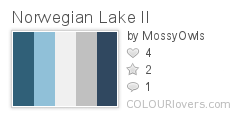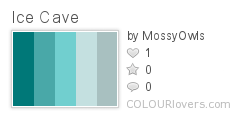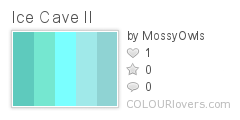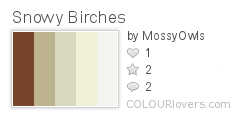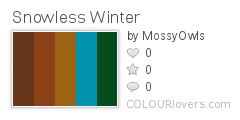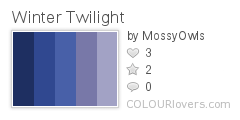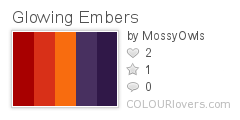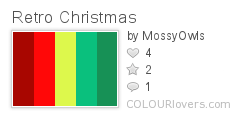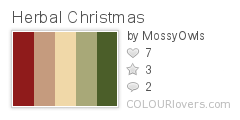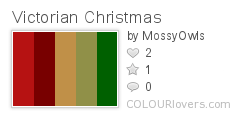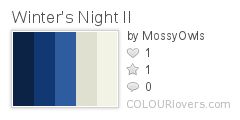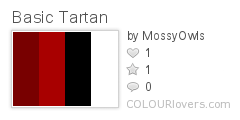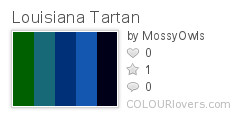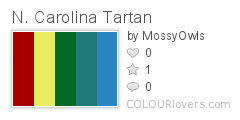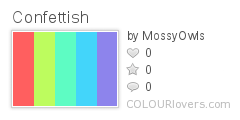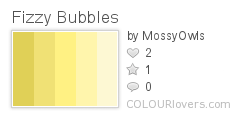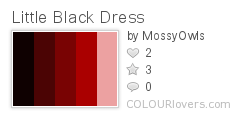Alcohol-based ink is one of those "extras" that go so well with polymer clay. Alcohol ink has many uses-- some of which I'll describe next week. In the meantime, let's go over some of the basics about this product.
Ink can be confusing. There are so many types out there, and they're not just different brands, but for different uses, with different chemical "bases": solvent-based and alcohol-based-- dye inks, pigment inks, chalk inks! It's a bit overwhelming. (I'm still learning, too!) If you've been afraid to try inks with polymer clay, I hope this information will help you understand how at least the
alcohol-based inks work and what you can do with them. (Maybe I'll tackle other inks later on. (g))
Ten on Tuesday: Ten Things to Know about Alcohol Inks:1. What "alcohol ink" is. Just as the name implies, alcohol ink is an ink with an alcohol base. They are dye inks that, according to
Glass Attic, are "soluble resin in alcohol" (if that means anything to you (g)). Basically, the alcohol "carries" the color. It evaporates away-- quite quickly-- and only the dye is left behind. One of the appeals of alcohol ink is that it can be stamped (or painted, or whatever) practically anywhere-- not just on paper, but on even slick surfaces like metal and glass. Another major appeal is that it combines vivid color with transparency. (You can see through it to whatever's underneath.)
Though you can also find pens that write in alcohol ink, you usually buy alcohol inks in small (1/2-ounce) plastic bottles-- either individually or in sets, depending on the brand and the shop. Speaking of brands-- the only two brands
I know of are Ranger's
Adirondack line and Jacquard's
Piñata (formerly "Fiesta") line. The two brands work in the same way and can be used interchangeably. Which brand you purchase will likely be based on availability and your personal color preferences. The 24 Adirondack colors are more muted and earthy than the 17 brilliant Piñata colors.
If you are lucky, you may find alcohol inks locally. (Both Michaels and Hobby Lobby carry some of the Adirondack line, in my area, but no-one has the Piñata line. In both stores, alcohol inks are stocked near the ink pads in the rubberstamping aisle.) If you can't find them locally, you can order them from numerous sources online.
2. A little goes a long way.Seriously, these colors are intense, and you don't need much for most applications. That's important to know, if you're on a budget and want to spend your recreation dollars wisely. Those little 1/2-ounce (that's 0.5-ounce, in case my fraction looks weird) bottles may not look like much, but you can do quite a bit of crafting before you'll run out.
If you're fortunate enough to find them in a local Michaels or Hobby Lobby, you can use a coupon and save some cash. If you use a 40%-off coupon on a $10 set of three Adirondacks, you get them for around $2 a bottle. Even at the regular price, you'll get your money's worth from this product.
3. You can mix the colors. If you can't find the exact color you want, you can mix the existing colors (even between brands) until you you get it right. Start slowly, though. As I wrote earlier, these are powerful inks, so you can easily overshoot the mark if you aren't careful. To combine colors, just apply drops from different bottles of ink onto the medium of your choice-- in our case, usually polymer clay-- then mix as usual. (Continue reading to learn about how to mix the inks into polymer clay.)
4. You can mix the inks into polymer clay.In addition to using them
on the clay (cured or raw), you can also mix alcohol inks
into the clay. Of course you can mix them into any color clay you like, but mixing with translucent clay gives you the most bang for your buck. The bold but transparent inks create especially lovely tints of translucent clay. This is probably the best way to get translucent color in polymer clay. (Don't forget to quench the cured clay in ice water to further enhance that gorgeous translucence!)
To mix alcohol ink into polymer clay, roll out the clay or just "smoosh" it down flat (so the ink won't run off). Drop a few drops of ink onto the clay. Remember-- a little goes a long way. You can always add more later, if you want it darker. If you want to combine colors, go ahead and drop different colors at the same time-- either on the same piece of clay (if you're confident about the proportions) or on separate pieces that can later be combined a bit at a time.
It is generally suggested that you allow the ink to dry before mixing it into the clay. This could possibly prevent plaquing (though it's not certain whether wet alcohol ink leads to plaquing in the first place), and it
definitely decreases the likelihood of staining your hands with the ink.
When the alcohol has evaporated, condition the clay thoroughly to evenly distribute the ink. If you prefer, you can also pre-condition the clay before adding the ink. Then you can mix in the inks just to the point of marbling.
5. You can mix the inks into liquid polymer clay, too!Yep, that's right. Alcohol ink works great for tinting liquid clay.
Follow the same basic principles as when mixing it with regular clay. Put a little liquid clay into a clay-compatible container. Put a drop or two (or more, depending on the amount of clay you're using and the intensity you want) on the surface of the clay. Combine colors of ink as desired. (Again, you can always add more later, so go slowly. Of course, if you accidentally add too much, you can balance it out by adding more liquid clay.)
It's a matter of debate, but some people think that it's best to allow the alcohol to evaporate before mixing the ink into the liquid clay. (They worry that mixing it right away could lead to bubbles, I think.) If you have the time and patience, I say it's best to err on the side of caution. (Either that or run your own experiments.) Once you've mixed the ink into the clay, you can add more until you're happy with the color.
Note: Until you pull it out of the oven, it can be difficult to tell exactly how liquid clay will look when it's cured-- especially where translucency is concerned. It's always a good idea to test a tiny dot of your mix before committing to it for a big project.
Liquid clay tinted with only alcohol ink tends to have very translucent color. This can be a great feature for some projects-- not so great for others. Keep this in mind. If you're mixing enough that you'll have some left over, consider labeling your mixtures. I like to know what brand the clay is (because they each have their own characteristics and best uses) and what I used to tint it with (if not the specific color and "recipe", then at least the basic product-- alcohol ink, oil paint, mica powder, etc.). Otherwise, you may find that you forget in two or three months, and then you'll have to either guess or cure more "test dots".
6. Some colors behave differently from the others.Yes, I know I said that you can mix colors from different brands, etc., and that's true. However, there are a couple of things to know about certain colors. For instance, I've noticed that some colors never seem to mix completely with polymer clay. The clay does take on some color, overall, but there are also tiny dark particles that stay suspended in the clay-- kind of like embossing powder or another inclusion. This could make some interesting faux stone, but it may be annoying if you were going for a completely smooth color. I'd suggest testing each new ink for this tendency before mixing it into a lot of clay. Based on my experience (and what I've read at Glass Attic), this may been more of a problem with a few of the darker Piñata inks-- "Rainforest green, Sapphire blue and the brown colors", according to Glass Attic. So far, I don't think I've come across this trait with the Adirondacks I own, but again, if you're concerned, test the inks first.
A second potential problem is that there can be some color shift with the red alcohol inks. I'm not sure which colors are more prone to this problem. I tried to search for information, but I can't find anything right now, even though I know I've read about this before. I've also seen it, myself, but I have very limited experience with it and don't know which specific colors shifted. Just be aware that the reds might tend to shift during curing-- meaning that they come out of the oven a different color than when they went in. In my experience, I think the red-tinted translucent clay looked pink before going in the oven, but came out more orange/gold. If it's important to you, it's simple to test a small bit of ink-tinted clay and see how it behaves.
7. You can apply the inks in layers.Sometimes you might want layers of colors on a piece. You can achieve this by applying one color to the surface of a piece, allowing it to dry, then applying the next color. Repeat as desired, but be sure to let each coat dry before adding the next. This prevents the colors from mixing and possibly muddying. With this technique, you'll probably want to apply each layer of ink in a "splotchy" way, so that some of the previous layer(s) still show. When you're done applying ink, let the piece dry again. Anytime your project has alcohol ink right on the surface (not mixed into the clay), you'll probably want to protect the ink somehow. (Otherwise, it can potentially be marred if it ever comes in contact with alcohol.) You can seal the inks with a very thin layer of translucent clay or a little liquid clay (before curing) or a polymer-friendly finish like Future or Varathane (after curing).
8. You can thin alcohol ink. If you want a softer color for a watercolor effect-- or want to get a few drops of to stretch a bit further-- you can dilute alcohol ink. Here's a little information about some of the products you can use (based on manufacturer's website, Glass Attic, and a little personal experience):
- Piñata "Claro Extender": Extends drying and working time. According to the manufacturer, this product doesn't change ink colors, but Glass Attic info says it makes them more translucent. Ink mixed with it dries shiny.
- Adirondack "Alcohol Blending Solution": Dilutes and lightens ink. Useful for blending. Removes ink from slick surfaces, hands, and tools.
- regular rubbing alcohol: Dilutes and lightens ink. Ink mixed with it dries to a more matte finish. Useful for cleaning hands, tools, work surfaces.
- Piñata "Clean Up Solution": Behaves similarly to rubbing alcohol. Is pure alcohol with brush conditioners (for the health of your paint brushes).
9. You can clean up alcohol ink (sometimes). Both manufacturers of alcohol ink make a product specifically for this purpose: Adirondack's Alcohol Blending Solution" and Piñata's Clean Up Solution. These products and good old rubbing alcohol work well at removing ink from most tools and work surfaces. Avoid getting it on your clothes or other fabrics, though. As with many arts and crafts, it might be best to not wear anything nice when working with something like alcohol inks. Even when just applying drops from the bottles, I sometimes end up with spatters over my work surface. These are easily wiped off a ceramic tile, but I don't think they'd come out of fabric as well. (If it were to happen, I'd try alcohol first.)
If you get ink on your hands (and you probably will), you can first try "conditioning" it off. Knead some clay. Use scrap clay or, if you're tinting some clay anyway, use the clay you're tinting with the ink. Some of the ink may come off as you condition the clay. You can try removing what's left with one of the cleaning products mentioned above. Depending on how much ink there is and if it's found a place to hide in the nooks and crannies of your fingernails, you may not be able to get it all off at once. Don't worry; it'll come off in a day or so of normal washing. Wear your "artist's hands" with pride! ;o) After cleaning your hands with alcohol, they may be more prone to drying and cracking, so don't forget to follow up with a little soothing lotion.
10. Raw alcohol ink-tinted clay may behave oddly. It seems that any time you mix a non-clay product into polymer clay, your best bet is to use it (i.e. cure it) as quickly as possible. The longer it sits around, the more likely it is to start doing odd things. According to Glass Attic, Alan Vernall reports that ink-tinted clay may tend to crack after a few weeks of sitting around (in the raw state-- not after curing). This isn't much of a problem most of the time. You can just recondition it-- maybe add a little diluent or mineral oil to soften it, if necessary. However, if you've made up a whole batch of canes with ink-tinted clay, it might be frustrating. Another problem Alan had was that the darker, "more vivid" colors of ink-tinted clay bled into surrounding areas of the cane. Keep these things in mind. It may be best to make small canes that you can use up quickly. Either that, or don't use alcohol ink to tint clay for your canes.
So, there are ten things to know about alcohol ink. Next week, ten more specific ways to incorporate alcohol ink into your polymer clay projects. :o)



